THE MOBILE FRONTIER
A GUIDE FOR DESIGNING MOBILE EXPERIENCES
Rachel Hinman
The Mobile Frontier: A Guide for Designing Mobile Experiences
By Rachel Hinman
Rosenfeld Media, LLC
457 Third Street, #4R
Brooklyn, New York
11215 USA
On the Web: www.rosenfeldmedia.com
Please send errors to:
Publisher: Louis Rosenfeld
Developmental Editor: Marta Justak
Interior Layout Tech: Danielle Foster
Cover Design: The Heads of State
Indexer: Nancy Guenther
Proofreader: Dan Foster
2012 Rosenfeld Media, LLC
All Rights Reserved
ISBN: 1-933820-55-1
ISBN-13: 978-1-933820-55-2
LCCN: 2012935787
Printed and bound in the United States of America
DEDICATION
To my mother, Patricia Tiffany-Hinman. Thank you for your unwavering support and loveand for raising me to believe a woman can do anything she sets her mind to.
HOW TO USE THIS BOOK
Who Should Read This Book?
This book was written for anyone curious about creating compelling mobile experiences. While it is primarily targeted at those who call themselves designers or user experience practitioners, it should prove helpful to engineers, project managers, students, and anyone interested in designing for mobile.
To be clear, this is not a technical book. It does not contain code snippets or provide the ins and outs of designing an application for any particular mobile operating system. There are lots of great books out there that will help you do thatbut this is not one of them. Instead, this book has been designed to help you understand what makes mobile user experience unique and fundamentally different than other design spaces. It outlines what I believe is important about mobile user experience while providing frameworks, design exercises, and interviews with mobile experts. My hope is that this book will help you navigate the unfamiliar and fast-changing mobile landscape with grace and solid thinking while inspiring you to explore the possibilities that mobile technology presents.
Whats in This Book?
Section One: What Makes Mobile Different?
The first part of this book will introduce you to the key characteristics that define mobile user experiences today. , are dedicated to providing you with information on what makes mobile user experience and design different than other design spaces.
Section Two: Emergent Mobile Patterns
, will discuss what people who have begun to settle the mobile frontier are currently doing. This chapter will discuss five emergent mobile UX (user experience) patterns you can lean on as you begin to craft your own mobile experiences.
Section Three: Crafting Mobile Experiences
, in this section will give you design exercises, prototyping methods, and design guidelines to try once you begin crafting mobile experiences.
Section Four: The Future of Mobile UX
Finally, , is all about the edge of the mobile frontier. Its the deep space stuff that a few brave souls have already begun to explore and pioneer. Its the stuff that will likely become our future very soon.
What Comes with This Book?
This books companion Web site ( rosenfeldmedia.com/books/mobile-design/) contains some templates, discussion, and additional content. The books diagrams and other illustrations are available under a Creative Commons license (when possible) for you to download and include in your own presentations. You can find these on Flickr at www.flickr.com/photos/rosenfeldmedia/sets/.
rosenfeldmedia.com/books/mobile-design/) contains some templates, discussion, and additional content. The books diagrams and other illustrations are available under a Creative Commons license (when possible) for you to download and include in your own presentations. You can find these on Flickr at www.flickr.com/photos/rosenfeldmedia/sets/.
FREQUENTLY ASKED QUESTIONS
Why is mobile UX such a hot topic right now?
For what felt like the longest time, mobile UX was considered a small and obscure design space that most designers felt obliged to learn more about but loathed participating in because of all the inherent design constraints. The release of the first iPhone in 2007 changed all that. The iPhone demonstrated to the mobile industry and the world what was possible when innovative mobile technology was paired with a stellar user experience. The iPhone was more than an innovative product; it was the first mobile device that got peopleregular, everyday people (not just the geeks)excited about using a mobile phone. Now, as increasingly more people are experiencing what its like to access and interact with information from nearly anywhere, through devices that are beautifully designed, mobile is no longer a niche topic. Theres never been a better time to design mobile experiences. See for more.
What makes mobile user experience and design different?
Practitioners of mobile UX design often cite context as the biggest difference between designing for mobile experiences and other design spaces. Developing an understanding and empathy for the depth, breadth, and design implications of the mobile context is quite possibly the most essential skill necessary in creating great mobile experiences. If youre a practicing designer, chances are that context is your design blindside. Most designers have been steeped in a tradition of creating experiences with few context considerations, although they may not realize it. Books, Web sites, software programs, and even menus for interactive televisions share an implicit and often overlooked commonality: use occurs in relatively static and predictable environments. In contrast, most mobile experiences are situated in highly dynamic and unpredictable environments. See for more information on designing for the mobile context.
What modifications to my existing design processes do I need to make to create good mobile experiences?
Mobile UX professionals use many of the same tools and processes as other UX professionals. Designers new to mobile UX must learn to calibrate their design decision-making skills to a new mediumand prototyping is essential in developing those decision-making skills. Although prototyping is considered a luxury for many PC-based experiences, it is an absolutely essential part of creating compelling tablet and mobile experiences. The reason is simple. Chances are, if you are new to mobile, your design experience and instincts arent very well tuned to mobile. Unlike the PC, the mobile design space is relatively new, and design patterns have yet to be formally codified. In lieu of experience and heuristics, the best way to develop these skills is to practice turning the brilliant ideas in your head into tangible experiences you and other people can engage with.
Prototyping can become your saving grace in this regard. See for tons of info on prototyping methods.
How do I design for touchscreen experiences?
One of the issues that makes designing for touchscreen experiences challenging for designers is that most of us have been steeped in a tradition of creating experiences using GUI (graphical user interface) principles. With the widespread uptake of mobile phones and tablets outfitted with touchscreens, were currently in the midst of a UI paradigm shift. Designers and UX professionals must now learn to create experiences that leverage NUI (natural user interface) principles. This includes learning the key differences between GUI and NUI, as well as understanding how to optimize experiences for touch. will give you valuable info on how to optimize screen-based experiences for touch UIs.


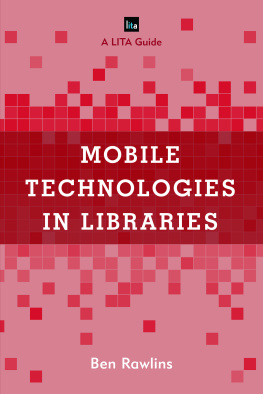
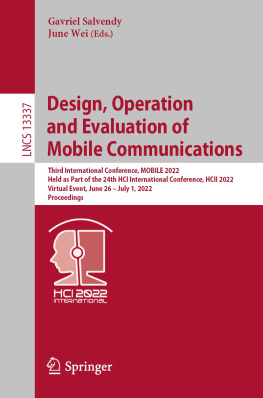
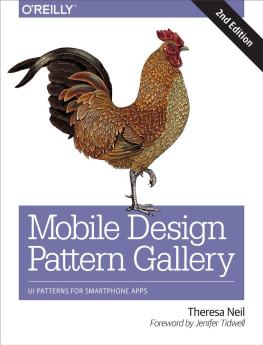
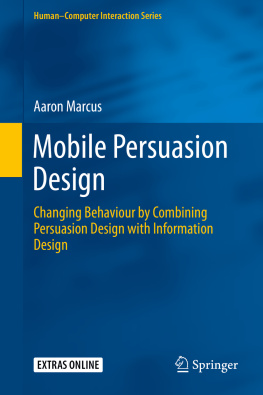
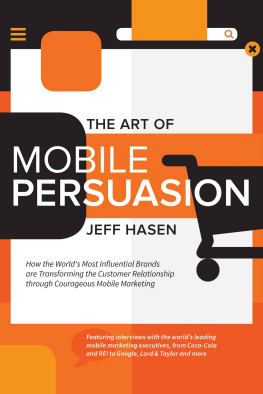

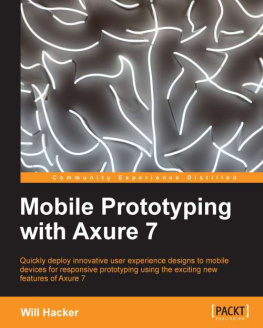
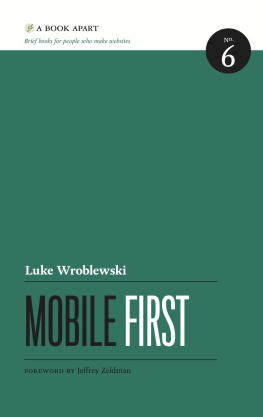


 rosenfeldmedia.com/books/mobile-design/) contains some templates, discussion, and additional content. The books diagrams and other illustrations are available under a Creative Commons license (when possible) for you to download and include in your own presentations. You can find these on Flickr at www.flickr.com/photos/rosenfeldmedia/sets/.
rosenfeldmedia.com/books/mobile-design/) contains some templates, discussion, and additional content. The books diagrams and other illustrations are available under a Creative Commons license (when possible) for you to download and include in your own presentations. You can find these on Flickr at www.flickr.com/photos/rosenfeldmedia/sets/.